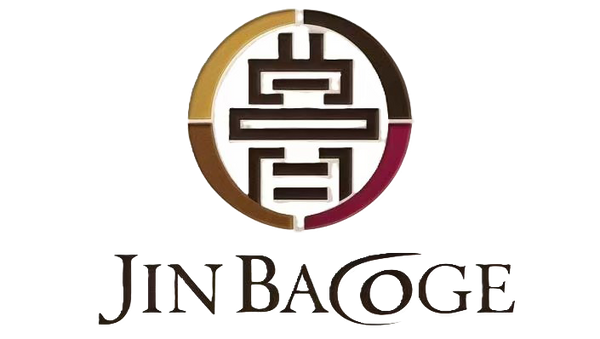About us
Share
About us
On the land of Linfen, steeped in three millennia of bronze civilization, we—a newly established company specializing in the trade of iron and bronze artifacts—quietly set sail in 2025.
Rooted in the fertile soil of Shanxi's folk crafts, we firmly believe that every artifact carries the memories of civilization. The company carefully
selects dozens of folk workshops with over a century of heritage across the province, bringing these handcrafted treasures hidden in narrow alleys to the public eye. From the iron crafts of southern Shanxi to the bronze incense burners of Linfen, each product adheres to the “lost-wax casting” technique—a national-level intangible cultural heritage craft—and is meticulously handcrafted by artisans through over a dozen intricate processes.
This ancient technique, dating back to the Shang and Zhou dynasties, uses traditional processes of beeswax modeling, plaster molding, and metal casting to give ironand copper new life in the hands of artisans. We adhere to the principle of not mass-producing or replicating, but rather preserving the unique warmth and texture of handmade products—the natural patterns formed by flowing wax molds, the subtle indentations left by hammering, all are a dialogue between time and craftsmanship.
Lost-wax casting:
Lost-wax casting (also known as investment casting) is a brilliant treasure in the history of ancient Chinese metal casting and can be called a “Chinese masterpiece.” Its history can be traced back to the Shang and Zhou dynasties, and it is an important craft that carries Chinese material culture and craftsmanship.
The core principle of this technique lies in utilizing the malleable and meltable properties of wax. Wax is used as the mold, covered with refractory materials to form a shell.
Once the wax mold melts away, molten metal is poured into the hollow shell, ultimately producing a precision casting identical to the wax mold. The process embodies the ancient philosophy of “going with the flow” in creation: first, beeswax and resin are mixed to form the wax material, which is then hand-shaped into the original form of the object (including complex patterns and hollow structures). This step requires craftsmen to deeply understand the principle of “form and spirit being intertwined,” such as when sculpting a Buddha statue, ensuring both precise proportions and imparting a compassionate aura; Next, layers of fine clay and quartz sand are applied to the wax mold to form a sturdy mold shell, akin to dressing the wax mold in a “ceramic garment”; Once the mold shell has dried and hardened, it is baked and heated to melt the wax mold, leaving a hollow cavity. Finally, molten metal (copper, iron, etc.) is poured into the cavity, and after cooling, the mold shell is broken, resulting in a exquisite casting.
The lost-wax casting technique holds an irreplaceable position in Chinese culture. It broke through the limitations of traditional mold casting techniques on complex shapes,
enabling the taotie patterns and cloud-and-thunder patterns of Shang and Zhou dynasty bronze ritual vessels to be rendered in three dimensions, making the openwork decorations on the Zenghouyi Ritual Vessel as fluid and dynamic as flowing clouds and water, and seamlessly integrating the “Xuande mark” and patina texture of Ming and Qing dynasty bronze incense burners. These artifacts are not merely utilitarian objects but also carry the cultural mission of “using objects to convey principles” — ritual vessels like ding and yi symbolize hierarchical order, bronze Buddha statues convey compassion and goodness, and bronze incense burners in scholars' studios embody literary elegance.
As the pinnacle of traditional Chinese metal craftsmanship, the lost-wax casting technique demonstrates ancient artisans' mastery of material properties and their relentless pursuit of aesthetic ideals. Its craftsmanship wisdom of “using softness to overcome hardness” and “the interplay of solid and void” continues to inspire modern metal manufacturing, alongside techniques like injection molding, to sustain the vitality of Chinese artifact culture.
Mission:
Preserving culture and ensuring that the fragrance of a thousand years continues to flow:
As young inheritors, we deeply understand the fragility and preciousness of intangible cultural heritage techniques. From the very beginning, we have been committed to “keeping old crafts alive.” On the one hand, we provide a stable platform for folk artisans to showcase their work. On the other hand, we hope to use modern design language to integrate traditional iron and copperware into contemporary life.
Protecting consumers, building trust through sincerity and quality:
In the ever-changing business landscape, we always prioritize the interests of consumers. We commit to ensuring that every incense burner we sell undergoes rigorous quality control. Whether it’s the authenticity of materials, the precision of craftsmanship, or safety standards, every aspect is rigorously tested. For modern reproductions or innovative designs, we clearly label the materials and craftsmanship used, ensuring consumers have a clear understanding of the product information. We have established a comprehensive after-sales service system, patiently addressing consumer inquiries and properly handling after-sales issues, ensuring every consumer can shop with confidence and peace of mind. We believe that only by treating consumers with sincerity can we extend our passion for incense burner culture further, so that every visitor to our site can experience both the cultural charm and a reliable consumer experience.
This is our mission: rooted in culture, grounded in integrity, allowing the thousand-year-old heritage of traditional bronze and ironware to enrich contemporary life, and ensuring that every encounter with Zen-inspired artifacts becomes a beautiful experience that combines cultural warmth with consumer confidence.
